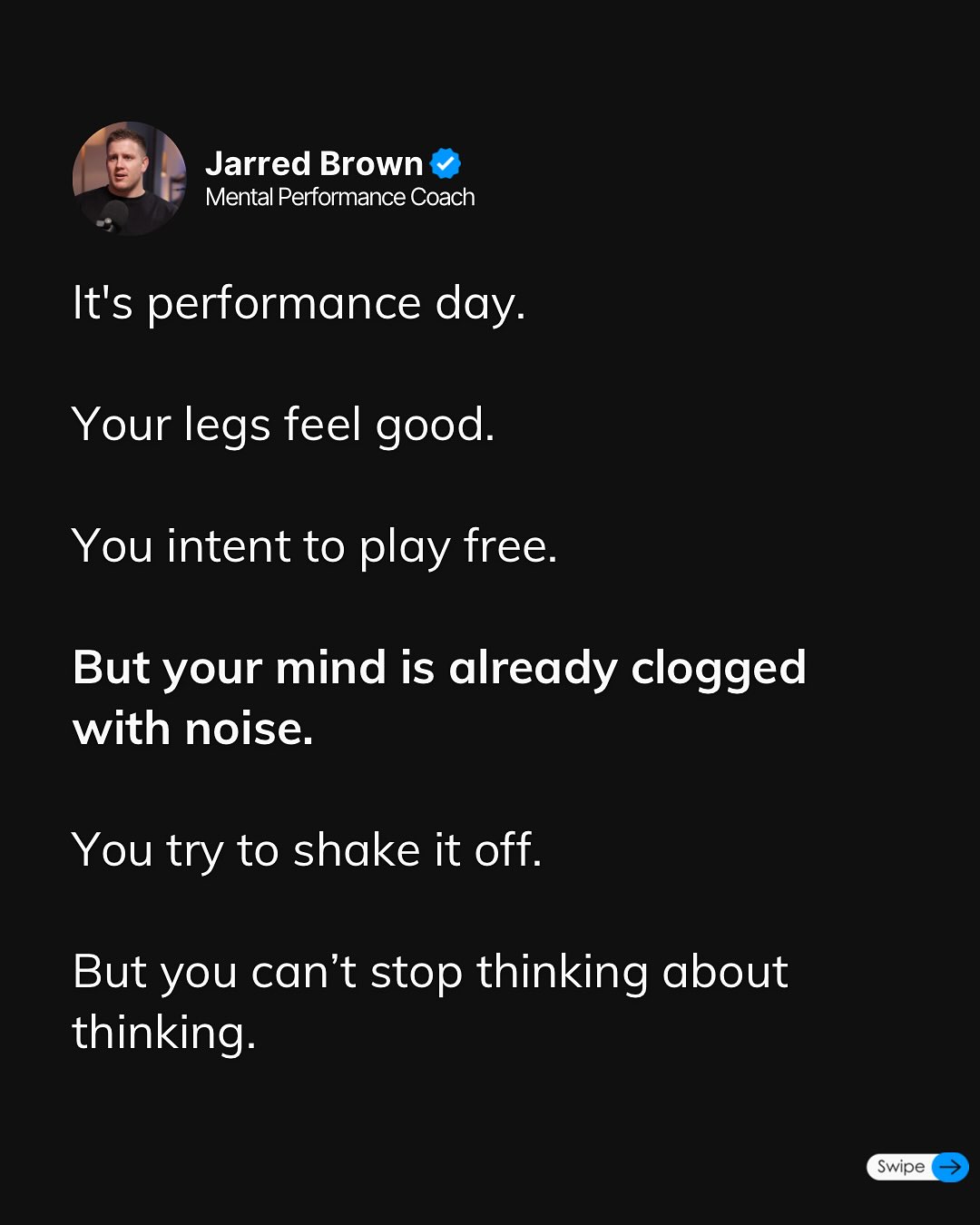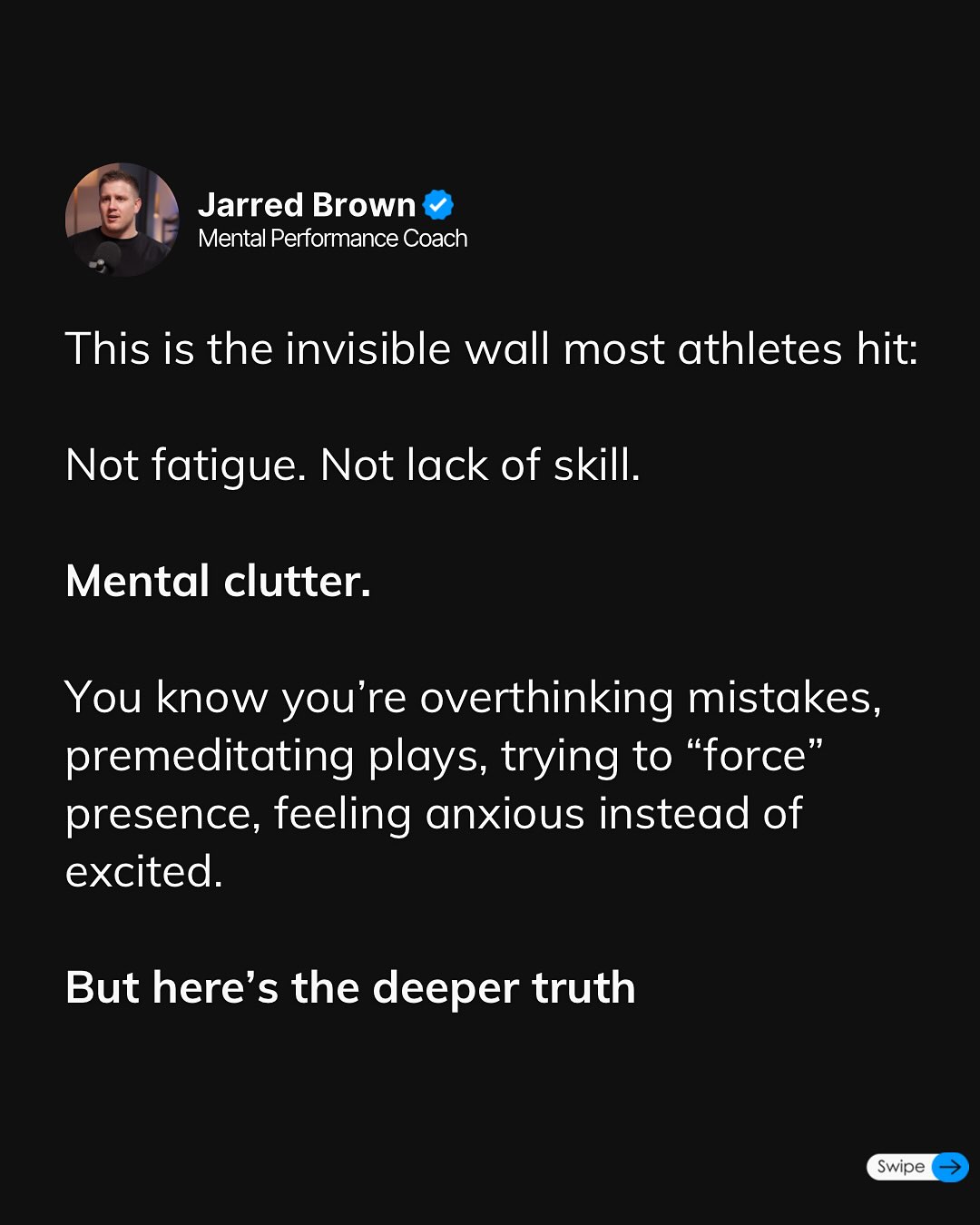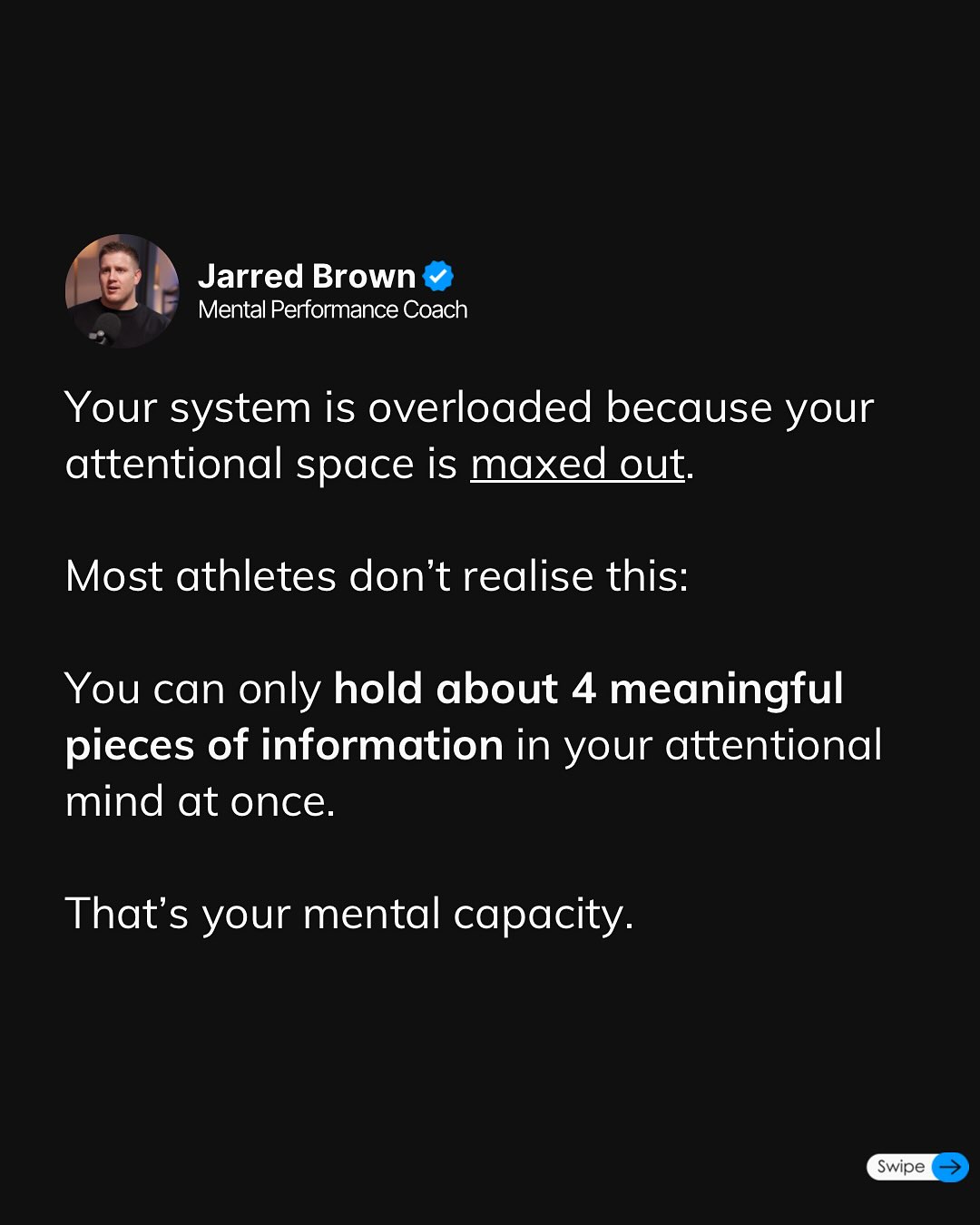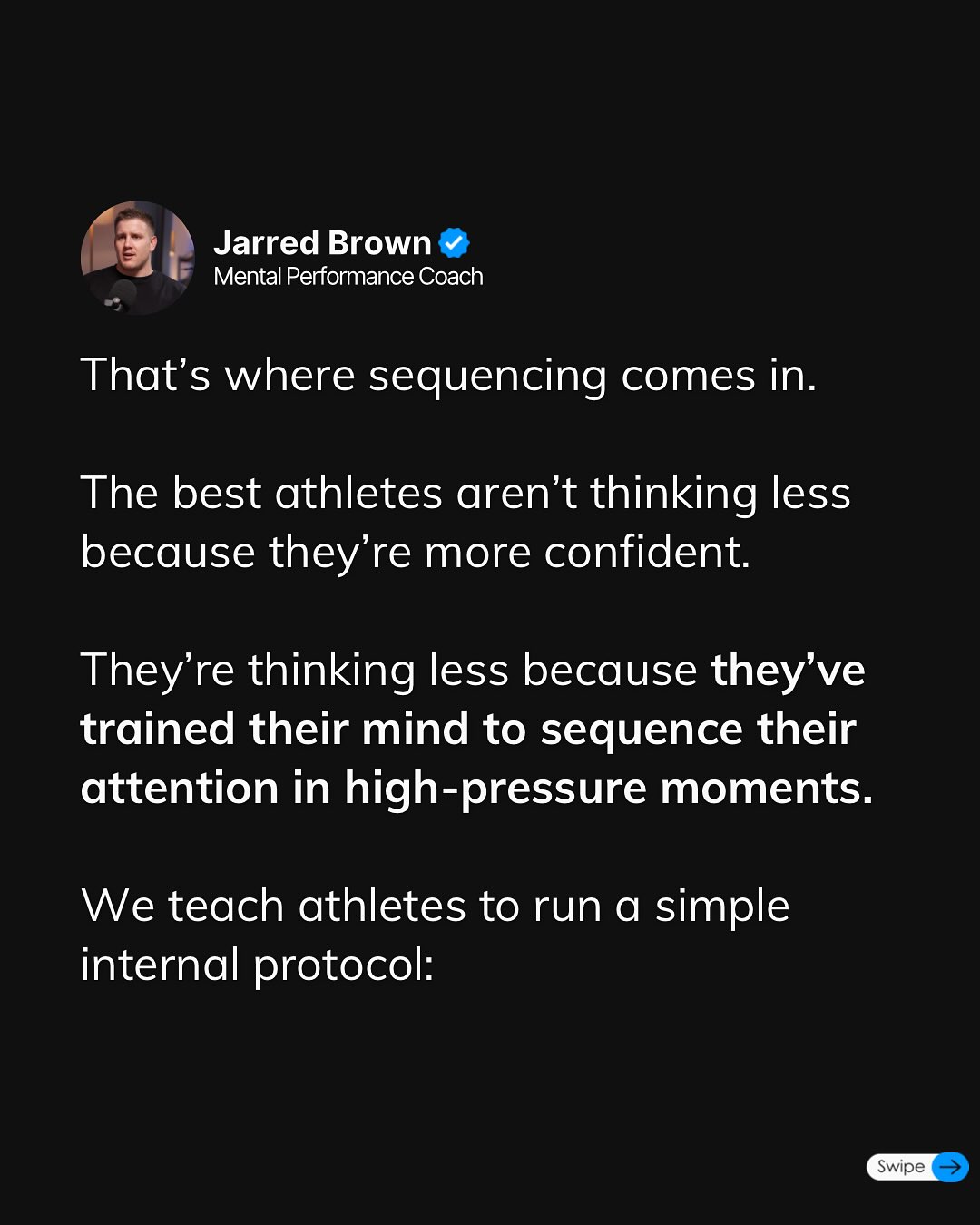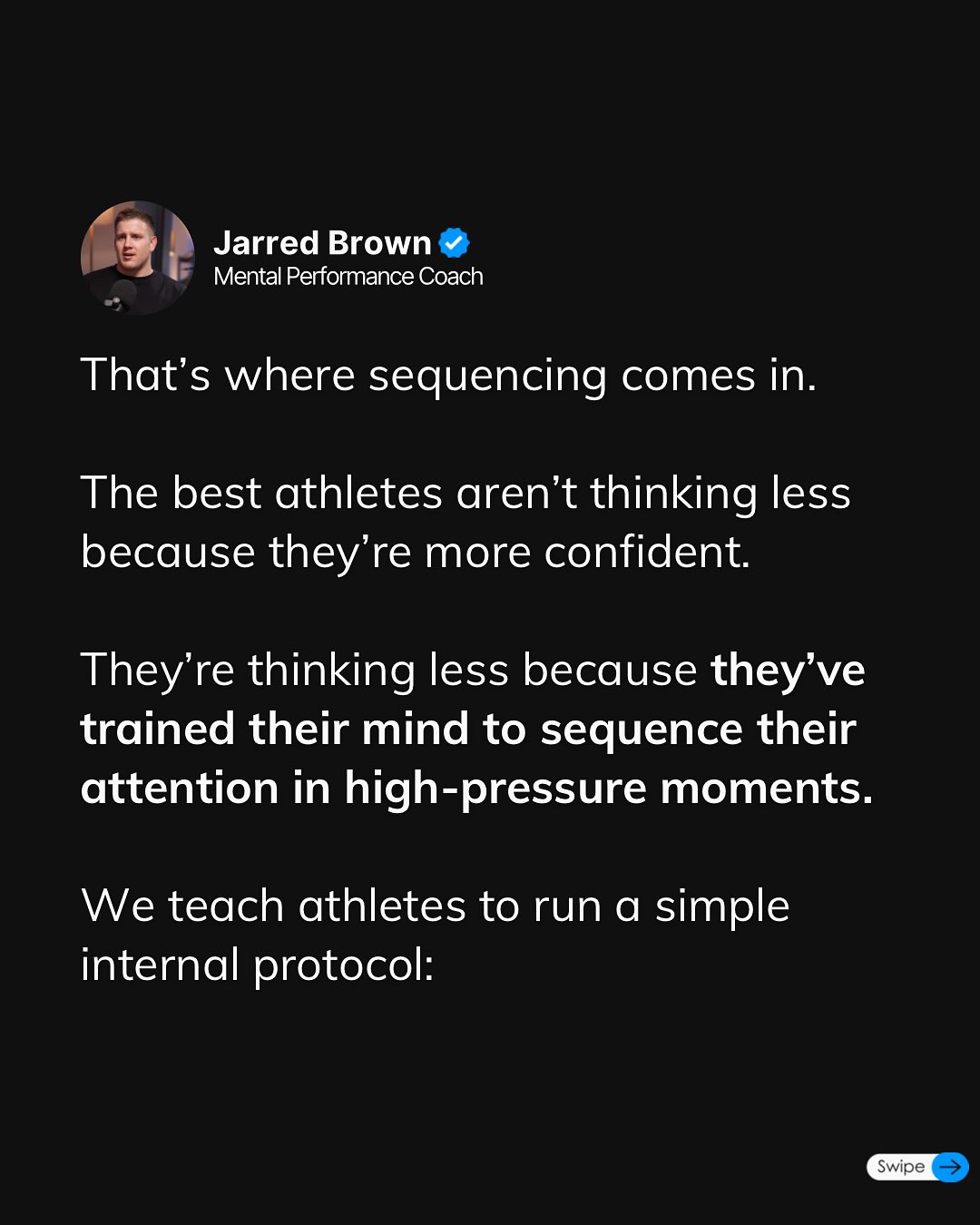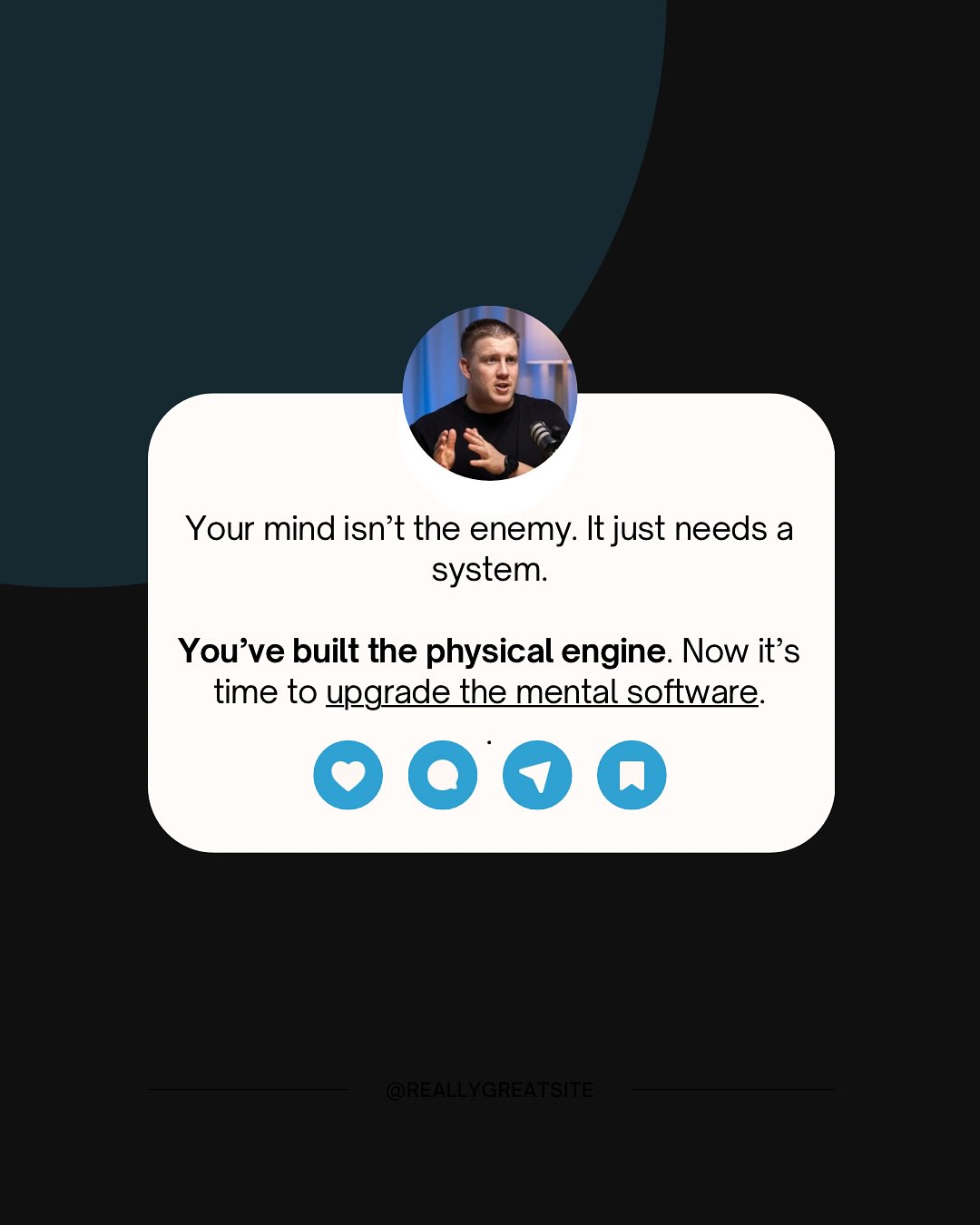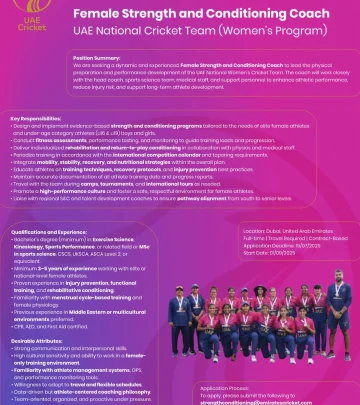Mental Overload: Upgrade Your Performance Strategy
Discover how elite athletes overcome mental clutter with a simple protocol for flow state!

Image: Instagram
In today’s high-pressure sporting world, mental clarity can be the difference between breakthrough performance and a losing streak. Mental skills coach Jarred Brown, known for his cutting‐edge techniques, explains that the brain isn’t broken—it’s simply overloaded. As athletes gear up for performance day with strong legs and physical readiness, many find that the mind fills with noise and overthinking, disrupting an otherwise finely tuned performance.
The Invisible Wall
Brown describes a common phenomenon among athletes: not fatigue or skill issues, but a mental barrier that arises when the system is overloaded. “Your system is overloaded because your attentional space is maxed out,” he explains. The coach highlights that the human mind can comfortably hold only about four meaningful pieces of information at once—this limited mental RAM is why even the most talented athletes sometimes lose clarity under pressure. When attention is split between past mistakes, fear of messing up, and premeditated actions, performance begins to suffer.
Mental Ram And Overload
The idea is simple yet powerful. Although an athlete might perceive thousands of details on the field, only a handful can be processed effectively at any given moment. This narrow operating window under pressure forces an overabundance of thoughts that can lead to overanalysis and anxiety. Instead of letting emotion drive decisions, elite athletes learn to limit how much mental energy they allocate to each moment.
Brown’s insights are rooted in years of working with both emerging talents and seasoned professionals. In several of his Instagram posts, he has stressed the importance of acknowledging inner thoughts rather than denying them. He recounts stories of elite athletes who, while physically prepared, fell prey to mental clutter. According to Brown, by accepting and organizing these thoughts, athletes can carve out the necessary mental space to perform optimally.
Flow State Activator
Central to Brown’s method is a protocol he calls the Flow State Activator. This system teaches athletes to sequence their attention rather than try to empty their minds entirely. The process is broken down into three simple steps:
1. Focus on Cue
2. Let the Sequence Take Over
3. Recycle Around to the Cue Again
By following these steps, athletes create more space for intuition, feel, and freedom. As Brown puts it, the result is “more space, more feel, more freedom. Fewer errors and faster recovery.” The goal is not to stop thinking, but to let the right thoughts flow at the right time so that the mental noise is reduced, allowing athletic instincts to come forward.
This mental sequencing is a game-changer. Rather than forcing a state of confidence by trying to suppress thoughts, elite competitors have trained their minds to work on autopilot in high-pressure moments. They are not thinking less because they have lost mental energy; they are thinking less because they have learned to structure their internal focus efficiently.
Upgrading The Mental Software
The analogy Brown often uses is that athletes have built their physical engine through years of training. Now it’s time to upgrade the software—the mind. When the brain’s processing window is filled with anxiety, regrets, and distractions, performance falters even if the body is ready to perform. Brown’s approach allows athletes to step back, reassess, and then let the mind take a command-based lead. This not only reduces errors but also speeds up recovery after mistakes or setbacks.
His message is clear: the mind is not the enemy. It simply needs an organized system to function optimally. Throughout his career and across his social media platforms, Brown has shared testimonials and stories that reinforce this point. One post narrates an encounter with an elite athlete who admitted, “I probably shouldn’t be thinking this, it’s bad isn’t it?” Such raw admissions underscore that the internal battle is common, and with the right mental adjustments, the performance can be transformed.
By implementing a simple internal protocol, athletes learn to clear the mental clutter and focus on what truly matters—the cues that drive their actions. This method has not only fostered improved performance in training and competition but has also helped many overcome the inner hurdles that can derail even the most talented individuals.
Brown’s work resonates widely because it cuts through the hype of traditional motivational talk. Rather than urging athletes to simply be confident or positive, he provides a tangible framework that can be practiced and refined over time. This system hooks into the modern understanding of cognitive load and the limited capacity of working memory, offering a scientific and practical approach to mental training.
Ultimately, the takeaway is that successful athletic performance is as much about mental organization as it is about physical prowess. As Brown says, “You’ve built the physical engine. Now it’s time to upgrade the mental software.” In a world where every millisecond counts, this mental upgrade might just be the secret weapon athletes need to dominate on the field.
The conversation around mental performance is evolving rapidly in sports. With experts like Jarred Brown lighting the way, athletes are increasingly seeing the value in managing their mental workload and mastering the art of focus. As this knowledge spreads, the future of sports may well belong to those who perfect both body and mind.
Read full bio of Srijita De


